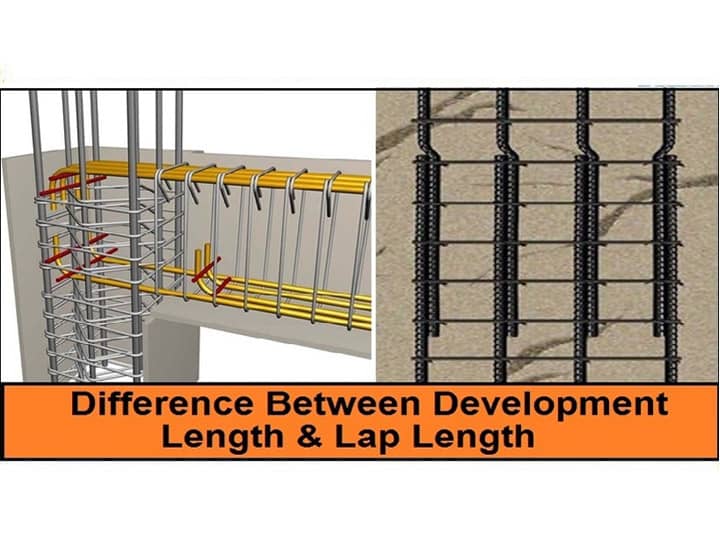The main purpose of providing reinforcement bars is to transfer the load from member to member.it may be either to another reinforcement bar or to concrete. In Order to successfully transfer the load from one member to another, reinforcement bars need to be firmly tied at both ends so that it can't be slipped away.
Description of two important terms used in reinforcement binding is prescribed below:
It is a length of Steel bar needed to be embedded into the column to establish the desired Bond strength between concrete and Steel. In simple language it is the length of Steel bar which holds to concrete members together. Concrete members like beams, columns, footings etc.
It is a grip between steel and concrete and makes a continuous structure. It is also known as anchorage length. It transfers stresses from steel bar to concrete and makes a continuous structure. It is provided as a bend. Such length is provided in a column footing joint, column beam joint and other critical joints. Reinforcement bars is bent because there is no space available at the end section.
Provision of appropriate development is an important aspect of safe construction practices, proper development length in reinforced bars shall be provided as per the steel grade considered in design.
Here is a classic example of typical Beam-column connection.
Reinforcement in the beam is extended into the column for some distance.
{math}(L_d+10 d_a){/math}
Ld= Development Length in Tension
db= Bar Diameter
Calculated tension or compression reinforcement at each section of a R-C member is developed on each side of that section by hooks or embedded length or mechanical devices. If the restraining concrete section is comparatively thin it cannot withheld the position of highly stressed bars then development is provided. Thus, to avoid splitting of bars from concrete. This extra embedment length provided is called as development length.
Basic purpose is to provide fixed support to the bars. Hooks are not provided in compression reinforcement. Where there is no space for extra length, hooks are provided for restraints.
As the name suggest, lap length is provided for overlapping two rebars in order to safely transfer the load from one bar to another bar. We know that rebars come in a certain length. If the rebar needs to be extended beyond that limit then sufficient lap length to be provided to safely transfer the load. Lapping length required to safely transfer stress from one bar to another. It varies from member to member and depends upon the grade of concrete, bar size, concrete cover etc.
In the case of bars having different diameter are to be spliced the length is calculated on the basis of the smaller diameter of the bar. Lapping splice should not be used for the bars having a larger diameter than 36 mm. In that case, welding should be done. But if welding is not practicable then lapping may be permitted for the bars larger than 36 mm diameter. The additional spiral should be provided around the lapped bar.
In India, the requirement of reinforcement bar splicing is covered in IS456 cl.25.2.5.
The code also specifies that the splicing of flexural members should not be at sections where the bending moment is more than 50% of the moment of resistance, and not more than 50% of reinforcement bars should be spliced at any given section.
